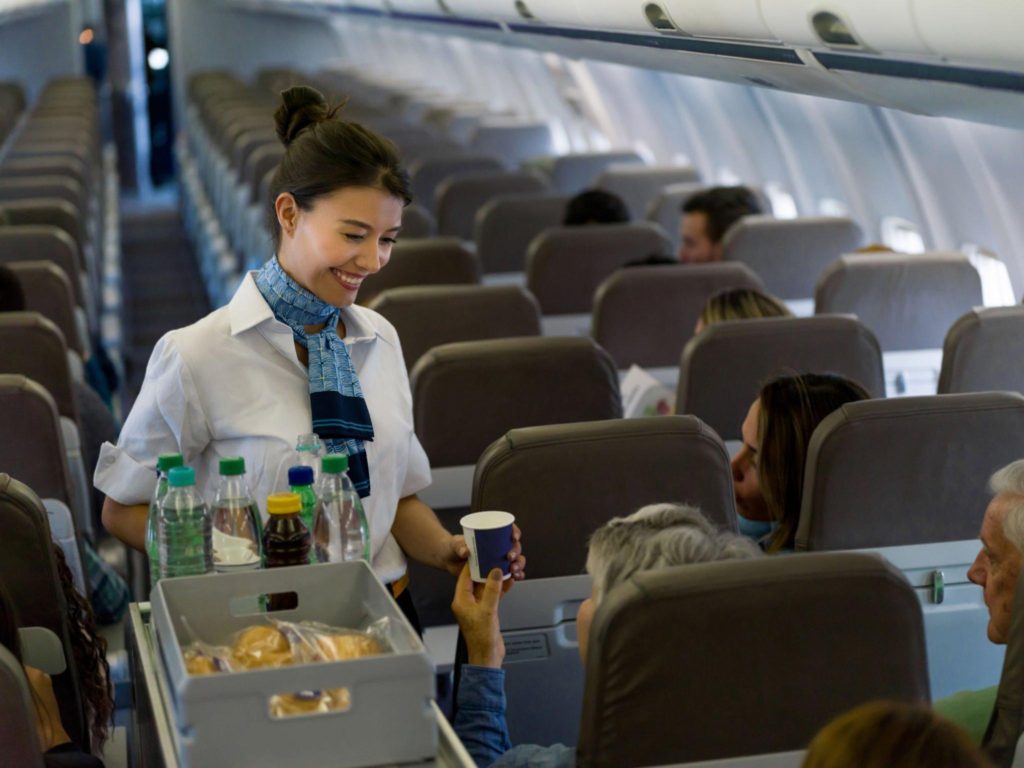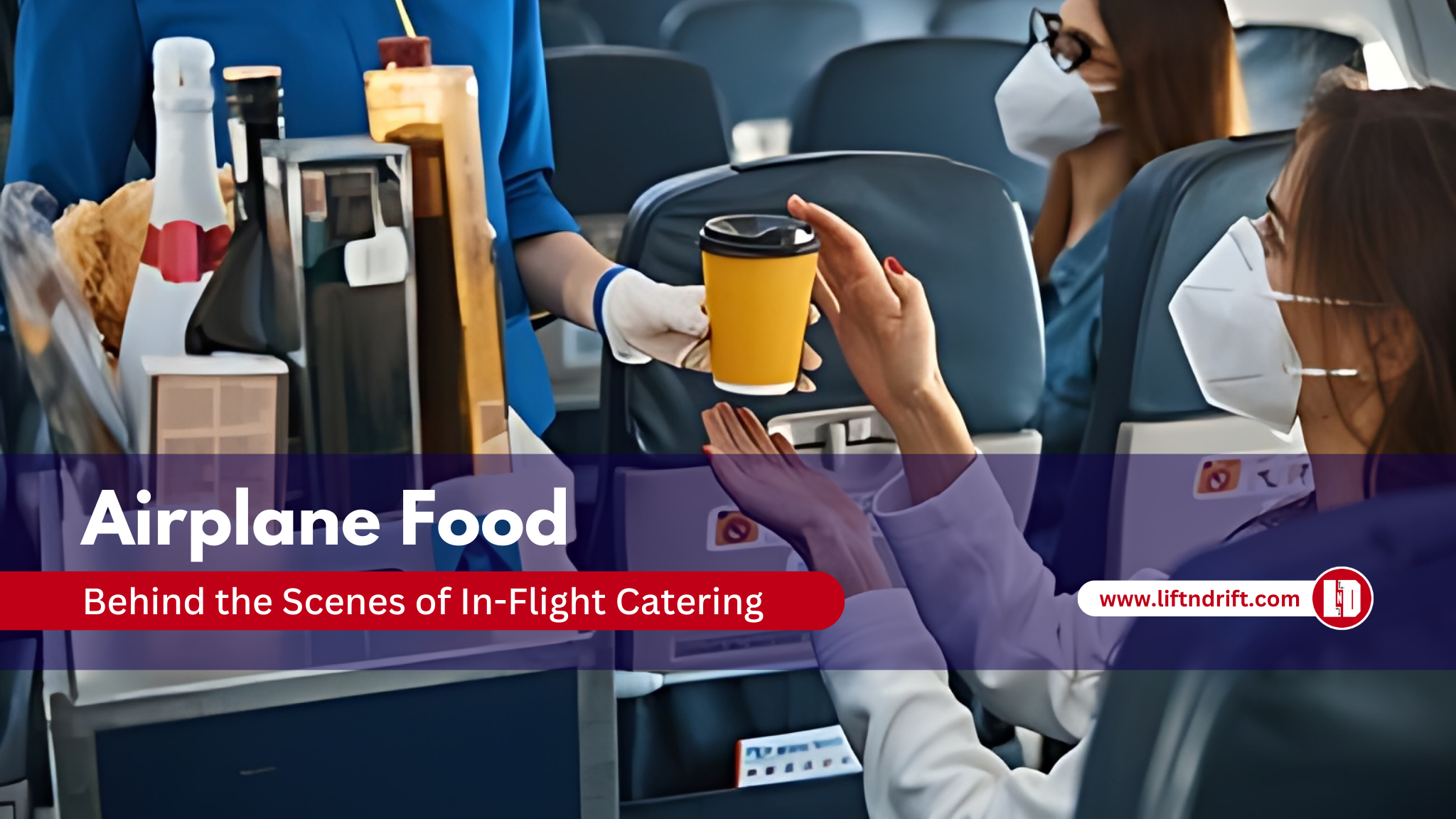Have you ever wondered how airlines manage to serve thousands of meals every day at 30,000 feet in the air? Airplane food has always been a topic of curiosity and, at times, even the subject of jokes. However, there’s more to it than meets the eye. In this blog post, we’ll take you behind the scenes of in-flight catering, uncovering the intricate process that ensures you’re served a meal at cruising altitude. So fasten your seatbelts and get ready for a culinary journey!

Table of Contents
| 1. The Importance of In-Flight Catering |
| 2. From Preparation to Presentation – Creating the Perfect Menu – Sourcing Ingredients – Kitchen at 30,000 Feet – Safety and Quality Control |
| 3. Meeting Dietary Requirements |
| 4. The Logistics of In-Flight Catering |
| 5. Challenges and Innovations |
| 6. Frequently Asked Questions |
The Importance of In-Flight Catering
Airplane food plays a significant role in enhancing the overall travel experience for passengers. Airlines understand that a well-prepared and delicious meal can make a long flight more enjoyable. That’s why in-flight catering is taken seriously by airlines worldwide. The goal is to provide passengers with a satisfying and memorable dining experience, even when soaring through the sky.
From Preparation to Presentation
Creating the Perfect Menu
Designing an in-flight menu is akin to crafting a work of art. The menu not only needs to cater to a diverse range of tastes and dietary preferences but also consider the challenges of serving food at high altitudes. Airlines collaborate with expert chefs and nutritionists to curate menus that are not only delicious but also nutritionally balanced. From tantalizing appetizers to delectable desserts, every dish is meticulously chosen to ensure passenger satisfaction.
Sourcing Ingredients
Airlines have dedicated procurement teams that carefully select and source ingredients from trusted suppliers. The focus is on obtaining fresh and high-quality ingredients that will withstand the demands of air travel. With strict guidelines in place, airlines prioritize safety and hygiene when choosing suppliers. After all, maintaining the highest standards is essential for delivering meals that meet passenger expectations.
Kitchen at 30,000 Feet
The next challenge lies in preparing and cooking meals within the limited space of an aircraft. Airlines have compact and well-equipped kitchens on board, where trained chefs and crew members work together to prepare and assemble each dish. These kitchens are stocked with the necessary cooking appliances and utensils to ensure the meals are cooked to perfection. Despite the space constraints, the culinary team strives to deliver meals that are both visually appealing and flavorsome.
Safety and Quality Control
Maintaining the highest standards of food safety and quality is a top priority in the airline industry. Airline catering facilities adhere to strict guidelines and regulations to ensure the meals are prepared in a safe and hygienic environment. Regular inspections and quality control checks are conducted to guarantee that the food served on board meets the highest standards. This dedication to safety and quality ensures passengers can enjoy their meals with peace of mind.
Meeting Dietary Requirements
Airline passengers have diverse dietary preferences and restrictions. Airlines strive to accommodate these needs by offering a variety of meal options. Whether it’s vegetarian, vegan, gluten-free, or kosher, airlines aim to provide meals that cater to different dietary requirements. Passengers can often pre-order their preferred meals during the booking process to ensure their needs are met. This attention to detail ensures that every passenger can enjoy a satisfying meal on board.
The Logistics of In-Flight Catering
In-flight catering involves a complex logistical operation to ensure that meals are delivered to the aircraft and loaded efficiently. Airlines work closely with catering companies and ground handlers to coordinate the delivery of meals, taking into account factors such as flight duration, passenger count, and destination. The meals are carefully packed and transported in temperature-controlled containers to preserve their freshness. The logistical aspect of in-flight catering is a well-orchestrated process that ensures meals are ready for departure.
Challenges and Innovations
In-flight catering faces several challenges, from limited storage space to the constraints of reheating meals on board. However, the industry is continuously innovating to overcome these obstacles. Advancements in technology have allowed for the development of improved meal packaging and reheating methods, ensuring that the food served retains its quality and flavor. Moreover, airlines are exploring new culinary trends and collaborations with renowned chefs to elevate the in-flight dining experience.
Frequently Asked Questions
Preparing meals on an airplane requires compact and well-equipped kitchens on board. Trained chefs and crew members work together to create culinary delights within the limited space available. The kitchens are stocked with the necessary appliances and utensils to ensure meals are cooked to perfection, even at 30,000 feet.
While some components of the meals are prepared on the ground, a significant portion of the cooking and assembly takes place on board the aircraft. The meals are carefully planned, and the final touches are added just before serving to ensure freshness and flavor.
Airlines strive to accommodate various dietary preferences and restrictions. Passengers can pre-order their preferred meals during the booking process, allowing airlines to cater to specific needs such as vegetarian, vegan, gluten-free, or kosher. These requests are then prepared separately to ensure compliance with dietary requirements.
So the next time you embark on a journey by air, take a moment to appreciate the incredible effort that goes into preparing the meals served on board. In-flight catering is a complex and highly coordinated process, ensuring that you can savor a delicious meal while cruising at 30,000 feet.
For more information about the fascinating world of aviation and paper airplanes, check out these links:
- Liftndrift: Explore the art and science of paper airplanes.
- Flight Science Behind Paper Airplanes: Learn the scientific principles that make paper airplanes soar.
- Flying Paper Airplane: Unleash your creativity with tips for flying paper airplanes.
- Paper Model Airplanes: Build impressive paper model airplanes with step-by-step instructions.
- Paper Airplanes for Everyone: Discover paper airplanes suitable for all skill levels.
Remember, the sky is not the limit when it comes to your imagination and the joy of paper airplane making!

